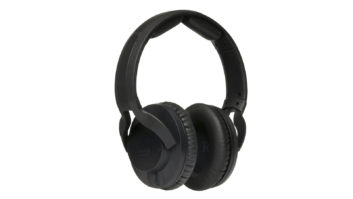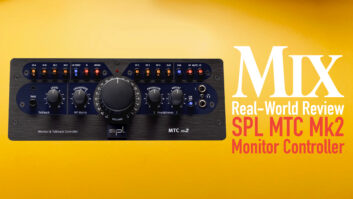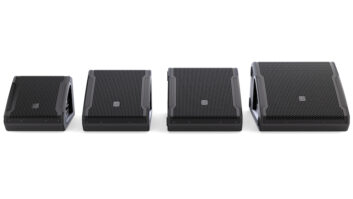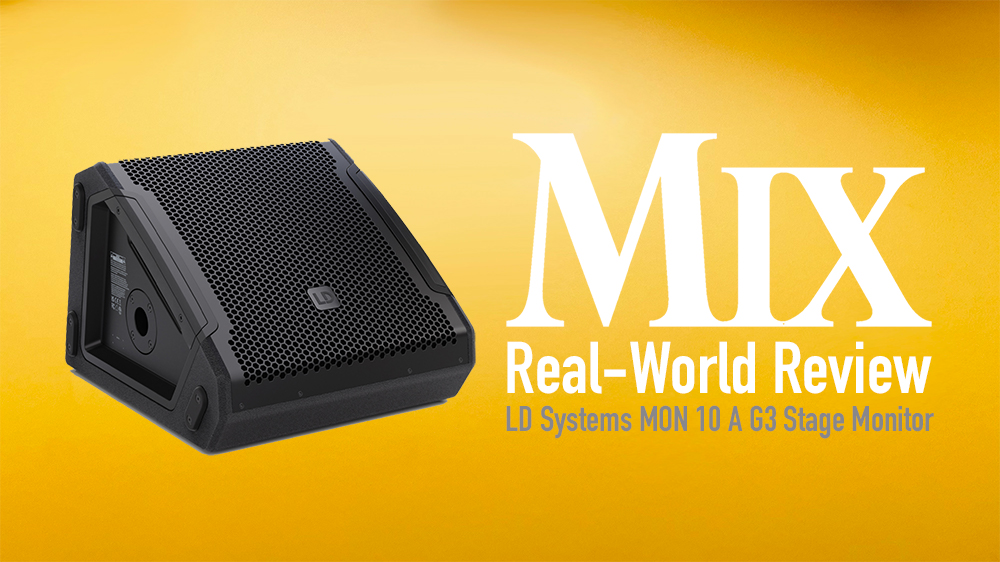
| MIX VERDICT: LD SYSTEMS MON 10 A G3 STAGE MONITOR |
| THE TAKEAWAY: “The MON 10 A G3 sounds good, is useful in a variety of applications, takes advantage of classic coaxial speaker attributes, plays plenty loud, and is reasonably priced. ” |
| COMPANY: LD Systems • www.ld-systems.com PRICE: $559.99 PROS: • Very good sound quality. • Compact footprint; robust construction. • Can be used for several different applications. CONS: • EQ points are fixed. • No user presets for EQ. • No control over input gain. |
New York, NY (April 11, 2024)—LD Systems may not be a household name to Mix readers, but the brand, part of Adam Hall Group North America, produces a wide range of pro audio products, including high-performance line arrays, power amplifiers, in-ear monitors and stage monitors.
The subject of this review—the MON 10 A G3—is aimed at the MI and DJ market, but it can also be used effectively in small touring or rental applications.
Part of LD Systems’ MON G3 Series, the MON 10 A G3 is a powered coaxial stage monitor based around a 10-inch low/mid-frequency driver with a 2.5-inch voice coil. The MON G3 Series also offers models employing 8-, 12- and 15-inch woofers, with all models utilizing a coax 1-inch-exit tweeter mounted on a constant-directivity horn with a dispersion pattern of 90 degrees vertical x 50 degrees horizontal.
The HF driver is custom-made with a ferrite magnet and features a 1.75-inch voice coil. The voice coil size allows the crossover point to be lowered to 1.7 kHz, which helps improve dispersion control and provides better coverage in the up/downstage direction, while reducing spill from one monitor into the area of an adjacent monitor mix. All MON G3 models employ Class-D amplification rated at 300 watts RMS/1200 watts peak.
The MON 10 A G3 cabinet is constructed from 15mm birch plywood coated with a good-looking, textured, polyurea finish, and has four thick rubber pads on the bottom. Die-cast aluminum handles are built into both sides of the cabinet, which I appreciated as the speaker weighs around 33 pounds.
CONNECT AND CONTROL
One side of the cabinet hosts the control panel, as well as audio and power connections. Combo jacks are provided for the two line-level audio inputs, each of which has a thru port for connection to another speaker. Each thru is linked to its respective input; i.e., input 1 feeds thru 1, and input 2 feeds thru 2. These are passive connections that allow signal to pass through even when the MON 10 A G3 is powered down.
An LCD display provides information regarding audio and system settings, while the companion rotary/push encoder is used to navigate menus and adjust parameters. AC power is supplied via twist-lock powerCON cable (included), and a powerCON output jack enables daisy-chaining multiple units. Located directly above the powerCON connectors is the mains on/off switch.
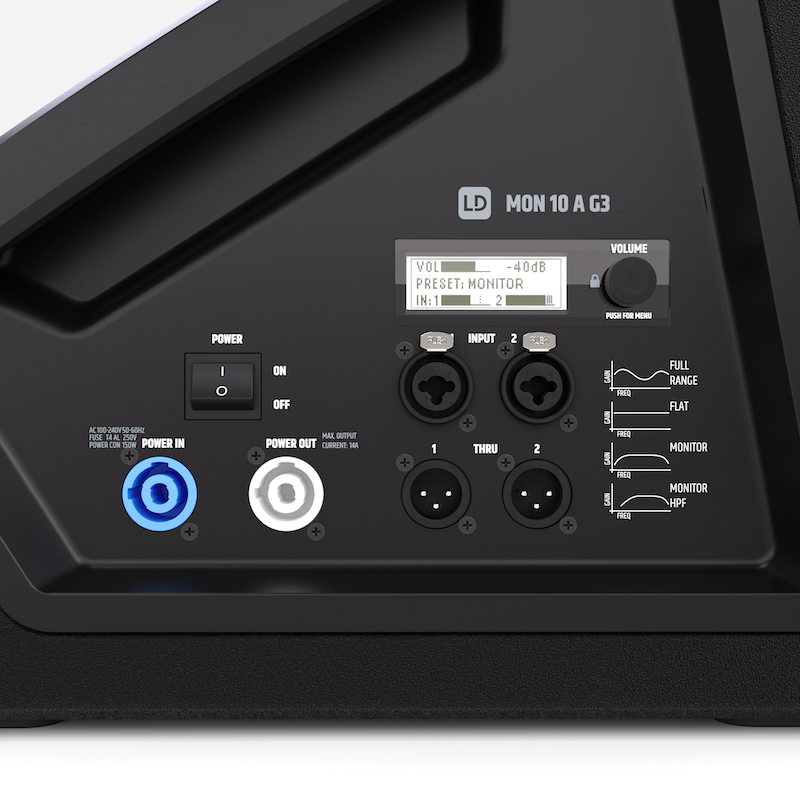
The opposite side panel features a 35mm pole flange, enabling the MON 10 A G3 to be pole-mounted for use as a P.A. speaker. This configuration turns the cabinet on its side, altering the dispersion pattern to 50 degrees vertical x 90 degrees horizontal—which is more appropriate for P.A. use. Both side panels are recessed to protect the connections, and a heat sink built into the rear panel keeps the electronics cool without need of a fan.
The MON 10 A G3 employs the latest generation of LD Systems’ DynX DSP, which handles EQ, presets and a tunable notch filter. Four presets are provided: Fullrange, Flat, Monitor and Monitor/HPF. These are fairly self-explanatory, and graphics on the control panel illustrate the general frequency curves. Though not specified, it’s implied that the Monitor/HPF setting would be used when pairing the MON 10 A G3 with a subwoofer for sidefill or drumfill applications.
DynX DSP provides three-band EQ, each band having a range of 10 dB. Unfortunately, the EQ frequency points are fixed and are not specified in the manual. Also available is a notch filter, which may be set to a variety of fixed frequencies ranging from 500 Hz to 10 kHz in 1/12-octave increments, with a gain range of 0 to -12 dB. A delay with a range from 0 to 10 meters (32 feet) in 0.1-meter (0.3 feet) increments is also provided, facilitating use of the MON 10 A G3 as a delay fill.
SOLID BUILD, SIMPLIFIED SIGNAL
Out of the box, the MON 10 A G3 inspires confidence. The construction looks and feels robust, and the cabinet is rather heavy, given its size. All connections are solid, and there’s no play in any of the fittings. The menu system is easy to navigate, with the main screen showing overall volume setting and input meters for channels 1 and 2. It’s here that we run into a divergence between the MON 10 A G3 and much of its competition.
The MON 10 A G3 inputs are fixed, linelevel, and lack any sort of gain control, whereas many multi-purpose speakers from other manufacturers provide at least one mic/ line input with gain control.
These gain controls are not intended to be used to mix inputs—they are there to set input gain, the same as you’d use the trim control on a mixer. But many coffee-house performers eschew proper input gain structure and use the controls to mix (for example) a mic on input 1 with a keyboard on input 2.
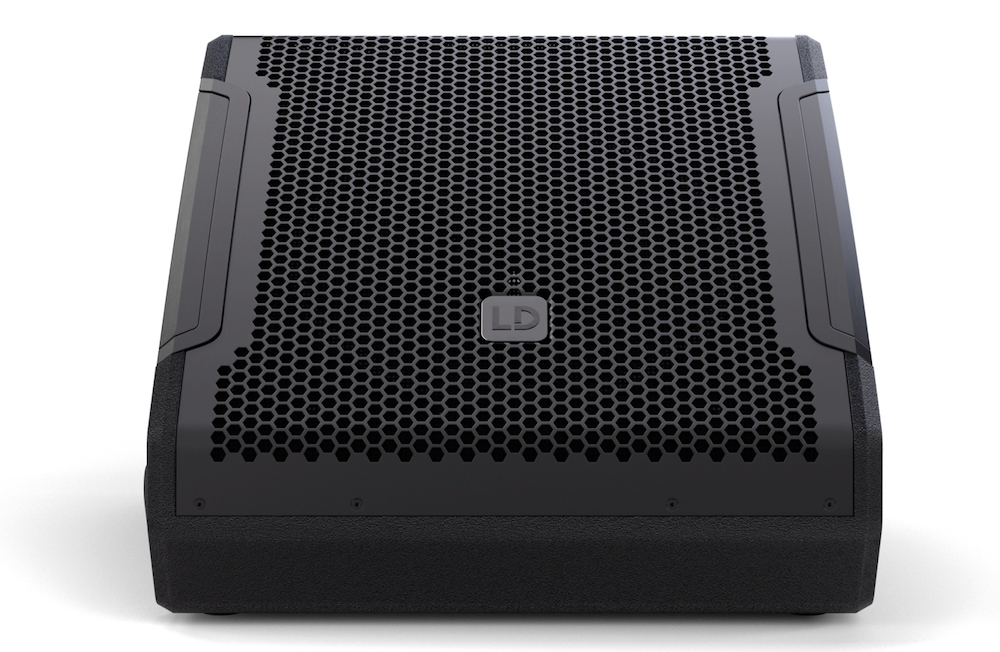
Regardless, the MON 10 A G3 inputs are internally summed to mono, and the balance between them cannot be internally adjusted. The applications notes in the manual suggest an example whereby a guitar or bass player could patch the output from their amp simulator or preamp into one input on the MON 10 A G3, and an aux send from a mixer into the other, giving them control over a “more me” monitor mix.
While this works electronically speaking, it completely ignores the fact that the amp sim or preamp would also need to feed the FOH mixer, resulting in one of two awkward scenarios: (1) the musician patches the respective thru connection from the input used for their preamp to the FOH mixer, and adjusts the output of the amp sim to satisfy their monitor mix, thereby changing the FOH mix any time they make an adjustment to their monitor mix; or (2) if the amp sim provides a secondary output, and the musician routes one output to the house mixer and the second output to the MON 10 A G3, it means they’ll probably be digging into menus on the amp simulator simply to change their monitor mix. It’s clumsy at best.
ON THE STAGE AND IN USE
The menu also provides access to the presets, which proved very useful, though I found an inconsistency between the Monitor settings on the two units supplied for the review. One unit recalled the Monitor preset with the LF EQ at +6 dB, while the other recalled the same preset with the LF EQ at +4 dB, even after defaulting both units to the factory settings. In any case, using the Monitor preset with the speaker deployed as a floor wedge, the LF response measured fairly flat down to around 65 Hz, though I’d probably set the LF EQ to +6 or +8 dB to deliver a bit more thump in this application.
Changing the preset to Fullrange yielded a +10 bump to the LF EQ and a +3 dB boost to the HF EQ, which maintains low-frequency response when the speaker is stand-mounted, while compensating for the loss of high frequencies typically suffered as listener distance from the P.A. increases. The MON 10 A G3 remembers the last EQ settings before shutdown, including any user modifications, but does not allow for storing any user presets, which is a bit of a drag. I was initially concerned about the notch-filter frequency not being continuously variable, but the 1/12-octave increments were narrow enough to be very useful.
Shure SM7dB Dynamic Vocal Microphone—A Mix Real-World Review
Sound of the MON 10 A G3 is best described as smooth, which is one of the reasons I like coax drivers. A coaxial design enables the LF and HF drivers to behave as a single acoustical unit so that arrival times from the LF and the HF drivers remain the same regardless of listening position. This characteristic is evident in the MON 10 A G3; as you move around the monitor within the coverage pattern, response remains consistent, with vocals, in particular, sounding very natural. Vertical coverage is deep enough that when you step a few feet back from the monitor, you’re still in the coverage pattern—a trait that will be appreciated by performers who move around a lot on stage.
Semi-pro users may be put off by the MON 10 A G3’s inability to “mix” its two inputs, but pro users will find it to be an excellent monitor that ticks all of the boxes. It’d be nice if the user interface provided more info regarding EQ frequency points, or offered a few choices of EQ frequencies, even if only in the mid-band.
All in all, though, the MON 10 A G3 sounds good, is useful in a variety of applications, takes advantage of classic coaxial speaker attributes, plays plenty loud, and is reasonably priced. If you’re looking for a wedge monitor in this price range, I’d suggest you check out the MON 10 A G3.

